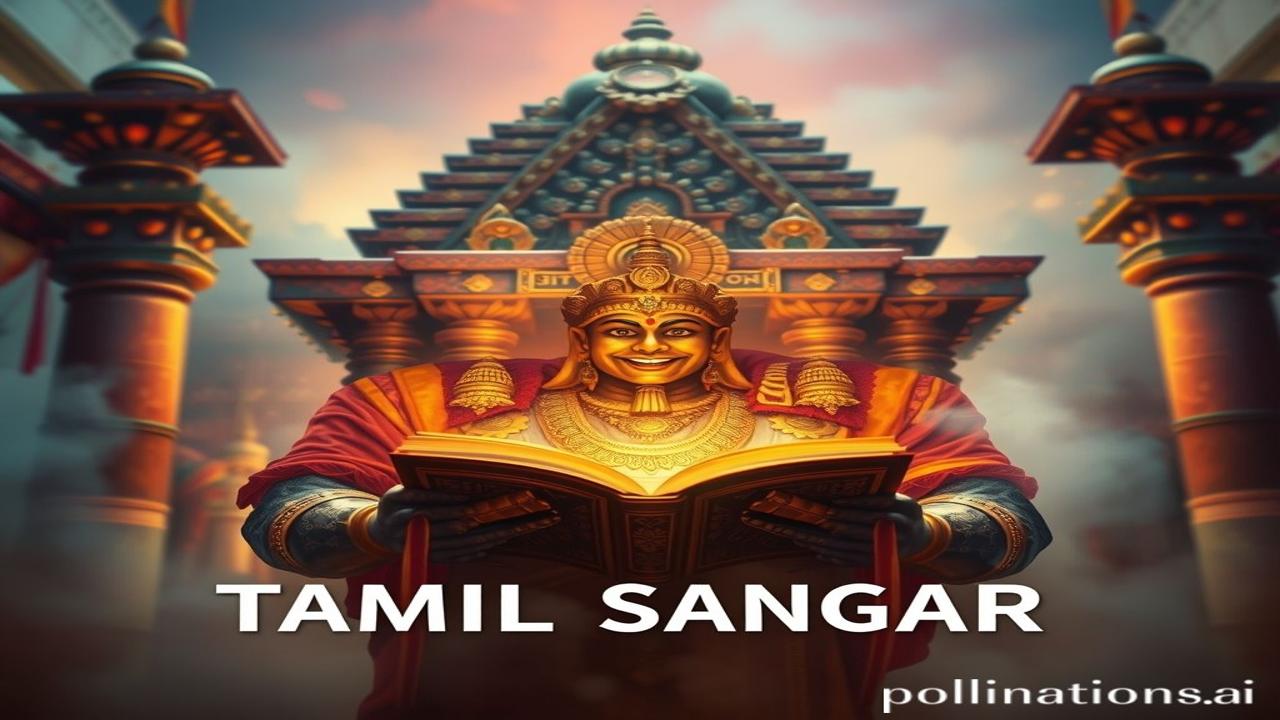Waqt Ke Panno Mein Dabi Tamil Sangam Ki Dastaan: A Journey Through Ancient Tamil Land
Kabhi socha hai, humare purvaj, jo aaj se hazaaron saal pehle iss dharti par base the, unki zindagi kaisi rahi hogi? Unke dil mein kya sapne the, unke haathon ne kya banaya, aur unki zubaan ne kya gaaya? Waqt ki dhool mein dabi, aisi hi ek khoobsurat kahani hai, Tamil Sangam Literature ki. Aao, hum milkar iss dastaan ko jeevit karein.
Sangam Literature: What, When, Where, and Why?
Sangam Literature is a treasure trove of ancient Tamil poems, songs, and narratives that offer a glimpse into the lives, culture, and society of the Tamil people over 2000 years ago. Think of it as a time capsule, filled with stories of love, war, nature, and everyday life in the Tamil country (present-day Tamil Nadu and parts of Kerala and Sri Lanka).
What is it? It’s not just one book, but a collection of various texts categorized into Ettutogai (The Eight Anthologies) and Pattupattu (The Ten Idylls). These works are primarily secular, dealing with human emotions and experiences rather than religious doctrines.
When and Where? The Sangam period is generally dated between 300 BCE and 300 CE. The term “Sangam” itself refers to assemblies of poets and scholars held in Madurai, the ancient capital of the Pandya kingdom.
Why is it important? Sangam Literature provides invaluable insights into the social, economic, and political life of ancient Tamilakam. It’s a primary source for understanding the development of Tamil language, culture, and identity. It shows us a sophisticated and vibrant society that thrived long before the arrival of outside influences. Yeh humari dhrohar (heritage) hai!
Zameeni Sach: Rulers, Lovers, and Warriors of Ancient Tamilakam
Imagine a bustling marketplace in Madurai. The air is thick with the scent of spices, jasmine, and freshly woven silk. You see warriors adorned in glittering armour, their swords gleaming under the scorching sun. Farmers are bartering their produce, while artisans are displaying their exquisite pottery and jewellery.
“Adey, chella! Yeh dekhna, kitna sundar kaam hai!” a craftsman calls out, displaying a delicately carved ivory comb.
Life wasn’t always peaceful. Kings like the Cholas, Pandyas, and Cheras were constantly vying for power, leading to fierce battles. Sangam poetry vividly describes these battles, with poems dedicated to valorous warriors and the tragic consequences of war.
But alongside the tales of kings and warriors, there were beautiful poems about love and longing. Aham poetry, a genre of Sangam Literature, explores the intimate emotions of lovers, their joys, their sorrows, and their secret rendezvous. These poems are filled with lush imagery, describing the landscapes and the natural world that shaped their lives. Ma Rukmini, a young woman betrothed to a village chieftain, might secretly pine for a simple farmer, her heart aching like the parched earth waiting for the monsoon rains.
Dharohar Aur Pehchan: Sangam’s Echoes in Modern India
Even today, the legacy of Sangam Literature resonates deeply in Tamil culture and beyond. The values of courage, hospitality, and love for nature that are celebrated in Sangam poems continue to be cherished. The language, the customs, and the worldview expressed in these ancient texts have shaped the identity of the Tamil people for centuries.
We see its presence in modern Tamil literature, music, dance, and even politics. The concept of Bharatiyata (Indianness) is incomplete without acknowledging the rich contribution of the Tamil Sangam age. Think of Bharatanatyam, a classical dance form whose roots can be traced back to the artistic traditions of this era. The poems still inspire contemporary artists, and its influence can be seen in Tamil cinema.
Mazedaar Tathya Ya Bhram-Bhanjak: The Myth of the Lost Continent
Log samajhte hain ki Sangam Literature sirf prem aur yudh ki kahaniyan hain, lekin asli sach yeh hai ki ismein jeevan ke har pehlu ko darshaya gaya hai. It gives us an insight into their complex social structures, their belief systems, their agricultural practices, and even their scientific knowledge.
Ek aur interesting baat: Kuch log yeh bhi mante hain ki Sangam Literature ek lost continent “Lemuria” ya “Kumari Kandam” ki kahani batata hai, jo kabhi Bharat ke dakshin mein maujood tha. While this theory is debated, it reflects the deep connection between the Tamil people and their land, a connection vividly expressed in their ancient literature.
Drishya Aur Bhavnaein: A Sensory Journey to Ancient Tamilakam
Imagine standing on the banks of the Vaigai River, the lifeblood of Madurai. The air is filled with the sound of temple bells, the rhythmic chanting of mantras, and the laughter of children playing by the river. The sun beats down on your skin, and the earth beneath your feet is warm and dry. The temple walls feel cool and smooth to the touch, adorned with intricate carvings that tell stories of gods and heroes. The sweet scent of jasmine garlands and incense fills the air. This is the world of the Sangam poets, a world of vibrant colours, intoxicating sounds, and unforgettable experiences.
Antim Vichar Ya Uddharan: The Enduring Power of Ancient Voices
Sangam Literature is not just a collection of old poems; it’s a living testament to the enduring spirit of humanity. It reminds us that even across the vast expanse of time, we share the same hopes, fears, and dreams as those who came before us.
As the famous Tamil poet Thiruvalluvar wrote in the Thirukkural: “Ullathal Ullathu Poiyaamaiyin Porullahtthallaththu Poiyaa Vidin.” (If one’s heart knows no deceit, all acts are righteous, even when they appear wrong).
Yeh kala (art) hai, yeh shakti (power) hai, yeh humari pehchan (identity) hai. Aaiye, iss khoobsurat dharohar ko sanjoyein aur aane wali peedhiyon tak pahunchayein.
